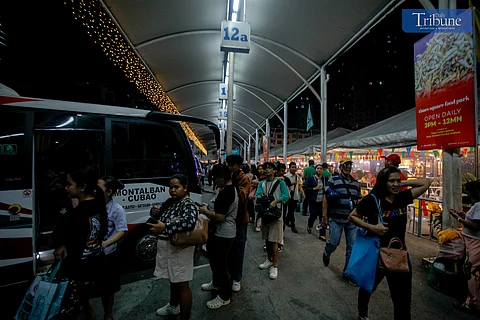
- NEWS
- the EDIT
- COMMENTARY
- BUSINESS
- LIFE
- SHOW
- ACTION
- GLOBAL GOALS
- SNAPS
- DYARYO TIRADA
- MORE

President Ferdinand R. Marcos Jr. has reaffirmed his administration’s commitment to revamping Metro Manila’s public transportation system to reduce daily commute times to less than one hour.
In an episode of the BBM Podcast, aired on Friday, the President emphasized that improving public transportation is a key strategy in combating chronic traffic congestion and enhancing the quality of life for millions of commuters.
“Ang usually sa planning dapat ang commute… going to work at saka pag-uwi, ‘yung one way should not, hindi dapat lumagpas sa isang oras (Usually, in planning, the commute—going to work and coming home—one way should not, should not exceed one hour). That’s the goal,” Marcos said.
According to the President, Metro Manila’s traffic woes are largely driven by the lack of reliable public transportation, which has forced many residents to rely on private vehicles, further worsening congestion.
“We’ve seen the examples around the world. ‘Yung mga lugar na talagang sumobra na ang traffic dahil lahat ng tao walang public transport, walang bus, walang tren, walang subway (In places where traffic has really gotten out of hand, it's because people have no public transport—no buses, no trains, no subways),” he pointed out.
Marcos said the government is focused on expanding and modernizing the public transit system, including both new infrastructure and upgrades to existing lines.
One key move, he cited, is the rehabilitation and deployment of the long-idle ‘Dalian trains’ on the MRT-3 line.
The Chinese-made train sets, acquired nearly a decade ago but left unused due to compatibility issues, have now been modified for local conditions and are finally being put to use.
“Yung pag-rehabilitate nung tinatawag na Dalian cars na hindi nagamit ng gaano katagal mula noong nabili. Ten years old already, hindi pa nagamit. Ngayon pa lamang nagagamit (The rehabilitation of the so-called Dalian cars, which hadn’t been used for a very long time since they were purchased. They're already ten years old, and they still haven’t been used. It’s only now that they’re finally being utilized),” Marcos said, adding that the trains would help boost passenger capacity and reduce crowding during peak hours.
The President also highlighted the ongoing construction of the Metro Manila Subway, which will connect Valenzuela City in the north to Pasay City in the south, offering a faster and more efficient alternative to road-based commuting.
“These are solutions so that life will be a little easier, so that life will be more convenient, you know, going to work,” he said.
The administration’s long-term goal, he reiterated, is to create a reliable, efficient, and commuter-friendly transportation network—one that minimizes daily stress and allows Filipinos to spend less time on the road and more time at home.
